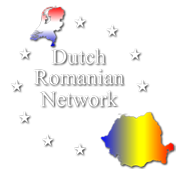Newsletter February 2023

Strengthening DRN Board
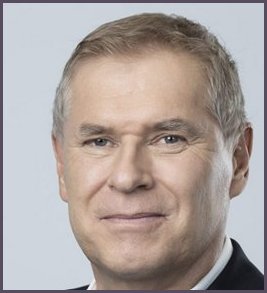 The board of the Dutch Romanian Network recently welcomed Robert Rekkers as a board member which implies an upgrade of the present advisory power of the current board to its members.
The board of the Dutch Romanian Network recently welcomed Robert Rekkers as a board member which implies an upgrade of the present advisory power of the current board to its members.
A little more about Robert Rekkers:
He was born in 1959 in Amersfoort. He graduated from the Rotterdam School of Business Administration in 1984 and from the Faculty of Law in Rotterdam in 1985. His banking career began in 1985 at ABN AMRO Bank Holland. In 1992 he became deputy director of the ABN AMRO branch in Asuncion, Paraguay, and two years later vice president of ABN AMRO New York. He was appointed country manager of ABN AMRO Bank Colombia in 1997 and president of ABN AMRO Romania in 1999. Since 2002, he held the position of chief executive officer (CEO) of Banca Transylvania. In 2012, he became general manager of Agricover Credit IFN SA and recently announced the appointment of Robert Rekkers as chairman of the Board of Directors of Agricover Credit IFN SA.
DRN welcomes two new members
The DRN is pleased to welcome another two new members who see the DRN as adding value for support in their business activities.
They are successively:
IP Flexgroep from Eindhoven
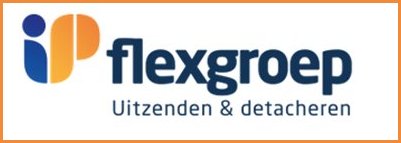 The IP Flexgroup is a partnership of specialized staffing and secondment companies. They work in industries they themselves are passionate about: construction, painting, engineering, mechanics and software.
The IP Flexgroup is a partnership of specialized staffing and secondment companies. They work in industries they themselves are passionate about: construction, painting, engineering, mechanics and software.
They started IP Techniek in the late 1990s, aimed at technical professionals. IP Afbouw, IP Schilders, IP Civiel and OviGre-Jobs have since been added. In 2013, they expanded the IP Flex Group with Trigon, for secondment and recruitment of construction, mechanical and software candidates.
Headquartered in Eindhoven, in the heart of Brainport; the top technology region in the Netherlands. They also have a branch in ‘s-Hertogenbosch. They are currently preparing a branch in Cluj-Napoca.
For further information: see website www.ipflexgroep.com
HM Group from Oradea (District Bihor).
 HM Group, is a successful amalgamation of several logistics companies, including Hooymeijer and VVT Europe. All services from terminal to hinterland in transport, storage and port are united in HM Group. The company was founded in 1935 by Jan Hooymeijer. The 9 Dutch branches are located in Rotterdam, Wageningen and Geldermalsen. For further information: see website www.hm-group.nl
HM Group, is a successful amalgamation of several logistics companies, including Hooymeijer and VVT Europe. All services from terminal to hinterland in transport, storage and port are united in HM Group. The company was founded in 1935 by Jan Hooymeijer. The 9 Dutch branches are located in Rotterdam, Wageningen and Geldermalsen. For further information: see website www.hm-group.nl
From trees and bulbs to logistics and transportation
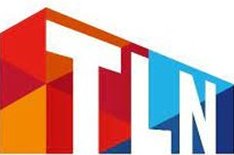
Generally speaking, industry associations are the first point of contact for the industry they represent.
Country organizations such as the Dutch Romanian Network play an additional role when it comes to specific country knowledge. Both serve the same purpose and that is to promote the interests of their members.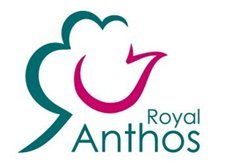
In this context, we certainly do not want to omit Leon Smet’ s career move as secretary of Royal Anthos. Smet has been secretary at Anthos since 2012, specializing mainly in the tree nursery sector. Among other things, he represents the organization in the European Nurserystock Association (ENA) and is a leader in the field of The Green City. The switch will be effective March 1.
IT Sector
Post Craiova – High-quality business in Romania
At first glance, Craiova is a somewhat drab industrial town in the middle of nowhere. A bit like Dutch Doetinchem.
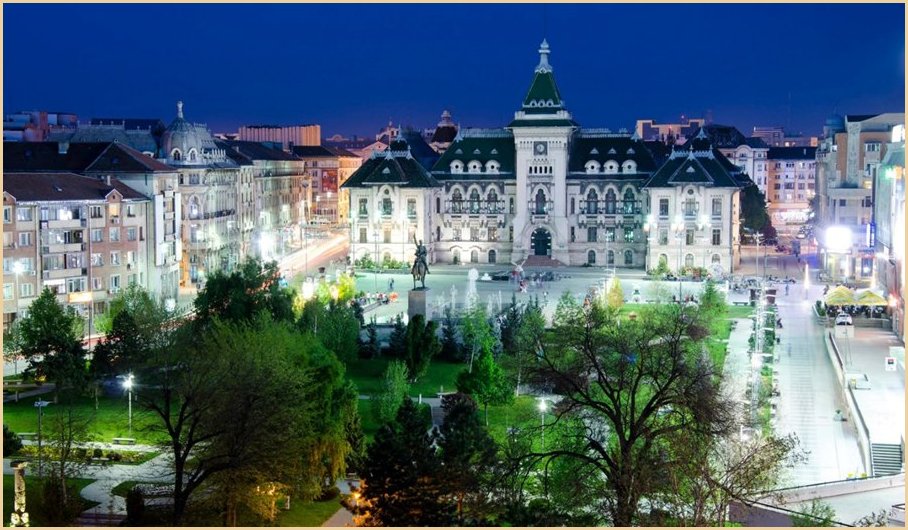 There is no tourist activity, you come there only if you have something to look for. Nevertheless, Craiova is increasingly a vibrant and thriving city with plenty of economic activity. There is a large Ford factory and even a growing Dutch community.
There is no tourist activity, you come there only if you have something to look for. Nevertheless, Craiova is increasingly a vibrant and thriving city with plenty of economic activity. There is a large Ford factory and even a growing Dutch community.
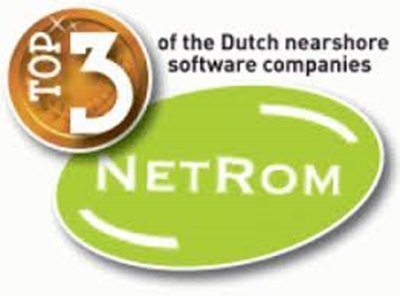 Hardly anyone knows that some 5,500 Dutch companies are now based in Romania. That makes Holland the largest investor in the country for 15 years. All that activity leads to a rapidly growing array of amenities. It also has a positive effect on the labor market.
Hardly anyone knows that some 5,500 Dutch companies are now based in Romania. That makes Holland the largest investor in the country for 15 years. All that activity leads to a rapidly growing array of amenities. It also has a positive effect on the labor market.
Previously, mainly the large-scale textile industry was active in Romania. Companies that produce T-shirts and underpants for the cheaper clothing chains. Needless to say, this is a ruthless industry with cutthroat price competition in several areas. That price is determined based on the centi-second system. In it, a minute is divided into 100 time units. For each action that workers perform, it is measured how many centi-seconds it costs, on that the price is determined. This has little to do with employee well-being.
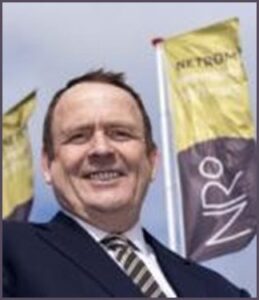 I am pleased to see a shift to smaller-scale production throughout Romania. And increasingly toward more high-quality labor, respecting the educational level of the population. Of course, global developments also play a role in this. Current anti-Western and strict zero-covid policies in China are driving many European small-scale producers to countries like Romania. Safer, closer and easier.
I am pleased to see a shift to smaller-scale production throughout Romania. And increasingly toward more high-quality labor, respecting the educational level of the population. Of course, global developments also play a role in this. Current anti-Western and strict zero-covid policies in China are driving many European small-scale producers to countries like Romania. Safer, closer and easier.
I think it is important to promote economic development and trade relations between the Netherlands and Romania. That is why I am a board member of the Dutch Romanian Network. We represent trade interests and inform entrepreneurs about such things as taxation and other relevant matters.
It’s kind of my hobbyhorse in this blog: economic boom leads to a meteoric improvement of all kinds of amenities and better accessibility to cities like Craiova. Thanks in part to the high level of education of the population and the tight labor market, working conditions, including wages, are improving here in all trades. The labor shortage is even leading to the arrival of migrant workers. And so your coffee in a cafe in Craiova may be served by someone from the Philippines. Just 10 years ago, that was truly unthinkable.
Sector Logistics and Transport
In Romania, road freight transport increased last year
Road freight transport recorded a 6.9% increase in terms of volume of goods transported in the first nine months of 2022, compared to the same period in 2021, while rail transport recorded a 2.9% decrease, according to data centralized by the National Institute of Statistics (INS).  In road transport, of the total 238.448 million tons of goods transported, 83% were recorded in national transport, up 8.3% compared to the same period of the previous year. The route of goods increased by 5%, in domestic transport recorded an advance of 9%. On the other hand, 41.797 million tons of goods were transported in rail transport, 77.9% of them in national transport. The tariff path of goods declined by 2.6% and only domestic transport recorded a decline of 10.9% respectively. According to INS data, 45.443 million tons were recorded in maritime transport during the said period, of which 45.433 million tons were recorded in international transport, and compared to the period from Jan. 1 to Sept. 30, 2021, the total volume represented an increase of 13.9%.
In road transport, of the total 238.448 million tons of goods transported, 83% were recorded in national transport, up 8.3% compared to the same period of the previous year. The route of goods increased by 5%, in domestic transport recorded an advance of 9%. On the other hand, 41.797 million tons of goods were transported in rail transport, 77.9% of them in national transport. The tariff path of goods declined by 2.6% and only domestic transport recorded a decline of 10.9% respectively. According to INS data, 45.443 million tons were recorded in maritime transport during the said period, of which 45.433 million tons were recorded in international transport, and compared to the period from Jan. 1 to Sept. 30, 2021, the total volume represented an increase of 13.9%.
Inland waterway freight transport totaled 21.446 million tons, of which 37.4% was domestic. The volume of goods transported decreased by 12.1% compared to the same period last year, while the length of goods decreased by 22.1%. In main oil pipeline transportation, 5.080 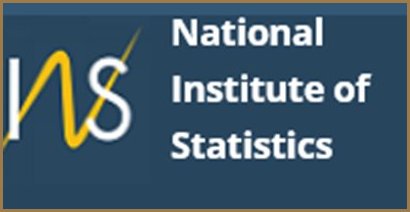 million tons of cargo was transported, up 3.4% compared to the same period in 2021, while cargo transshipment increased 7.5% year-on-year.
million tons of cargo was transported, up 3.4% compared to the same period in 2021, while cargo transshipment increased 7.5% year-on-year.
In air transport, the volume of goods transported totaled 37,000 tons, up 26.7% compared to the first nine months of last year. At the same time, between Jan. 1 and Sept. 30, 2022, 63.4% of freight volume in national road transport was transported on distances between 1 and 49 km, 20.2% on distances between 50 and 149 km, and 13, 1% on distances between 150 and 499 km. Inland waterways also transported 56.2% of the volume of goods over distances between 150 and 299 km. In road transport, the commodity divisions with the largest shares of total goods transported were: metal ores and other mining and quarry products; peat; uranium and thorium (32.8%) and other non-metallic mineral products (19.4%). At the same time, significant weights were recorded for the divisions: coal and lignite; crude oil and natural gas (21.0%) and coke, refined petroleum products (20.8%).
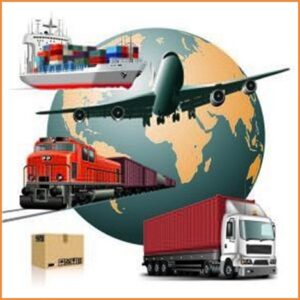 The highest shares in maritime transport were recorded in the agricultural, hunting and forestry; fish and other fishery products (35%) and coal and lignite; crude oil and natural gas (20.1%) product divisions, as well as in inland shipping in the mineral ores and other mining and quarrying divisions; peat; uranium and thorium (36.3%) and agricultural, hunting and forestry; fish and other fishery products (33.8%). In the road freight segment, goods transported on own account represented 57.7% of the total, and in terms of destination, 17% of the total was recorded in international transport. Of the total goods in international road transport, 40.632 million tons respectively, transport between third countries represented 46.3%, cabotage 21.9% and loaded goods 17.7%. INS statistics show that in international road freight transport, 93% of all goods unloaded were from European Union (EU) member states and 94.2% of all goods loaded were destined for member states. The largest volumes of unloaded goods came from Germany (20%), Hungary (14.7%) and Italy (13.5%), and in terms of cargoes, 18.3% of the cargo volume was destined for Germany, 17.3% Italy and 12.4% Hungary.
The highest shares in maritime transport were recorded in the agricultural, hunting and forestry; fish and other fishery products (35%) and coal and lignite; crude oil and natural gas (20.1%) product divisions, as well as in inland shipping in the mineral ores and other mining and quarrying divisions; peat; uranium and thorium (36.3%) and agricultural, hunting and forestry; fish and other fishery products (33.8%). In the road freight segment, goods transported on own account represented 57.7% of the total, and in terms of destination, 17% of the total was recorded in international transport. Of the total goods in international road transport, 40.632 million tons respectively, transport between third countries represented 46.3%, cabotage 21.9% and loaded goods 17.7%. INS statistics show that in international road freight transport, 93% of all goods unloaded were from European Union (EU) member states and 94.2% of all goods loaded were destined for member states. The largest volumes of unloaded goods came from Germany (20%), Hungary (14.7%) and Italy (13.5%), and in terms of cargoes, 18.3% of the cargo volume was destined for Germany, 17.3% Italy and 12.4% Hungary.
Medical Sector
Forecasts 2023 – How will the medical services market evolve in Romania?
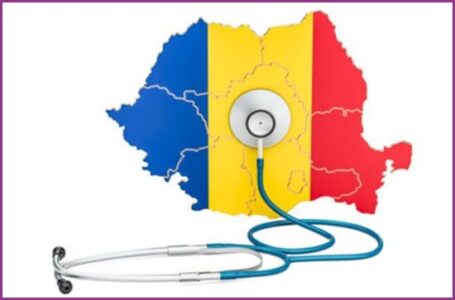 The market for private medical services will continue to grow, the major players will invest in organic development of new clinics and hospitals, as well as in acquisitions to strengthen their position in the market. The figures also show that players in this sector made significant progress last year.
The market for private medical services will continue to grow, the major players will invest in organic development of new clinics and hospitals, as well as in acquisitions to strengthen their position in the market. The figures also show that players in this sector made significant progress last year.
The latest data shows that the turnover of private clinics, which work with specialized medical assistance (CAEN code 8622), reached 9.1 billion lei (1.9 billion euros) in 2021, compared with 7.2 billion lei the previous year, and the activities of companies operating in the hospital field reached 1.9 billion lei.
Investments will be concentrated in large cities, such as Sibiu, Brasov, Oradea, Cluj, Constanta, Timisoara or Iasi, where there are medical personnel. In the local market, the polarization of hospitals and clinics will be reinforced because there are many places where people do not have access to medical care close to home.
There will also be new investments in labs and collection centers, as labs are a winning bet, as most patients pay for medical tests as House funds run out in the first days of the month. The lists of patients waiting to be capped for routine blood tests stretch over one or two months.
And the pharmaceutical market will continue to grow and become increasingly competitive. The battle for pharmacies will intensify after Sensiblu acquired Gedeon Richter’s pharmacies and Hungarian distribution division through Dr. Max Group last year. Practically, this transaction means an increase in the number of pharmacies Sensiblu/Dr. Max to more than 800 units and brings the group closer to the market leader – Catena – with 900 pharmacies nationwide.

Predictions:
Major players in the private medical services market will continue to invest in organic development and new acquisitions to strengthen their position in the market
The Regina Maria network will continue its investments, with about 20-25 million euros for annual expansion, according to previous data from the company. And the MedLife Group will continue to invest in organic development and acquisitions.
Last year, transactions worth tens of millions of euros were signed in the private medical services market. MedLife ticked off 13 transactions last year, Queen Maria bought several companies in this market and Medicover Swedes strengthened its position in the market through three transactions.
Private medical services operator Gral Medical, one of the largest players on the market, controlled by Romanian entrepreneur Robert Şerban, announced it will invest 13 million euros in two oncology hospitals in Ploiesti and Craiova, but also plans to expand the hospital from the capital.
Small and medium-sized players will continue to bet on niche medical services
Commitment to niche services proved to be a winner for small and medium-sized clinics, which managed to survive in the market because these services set them apart. Subsequently, these players will move into niche medical services. Clinics specializing in dermatology, cardiology, orthopedics and medical imaging centers entered the market.
Competition in the private medical services market will increase
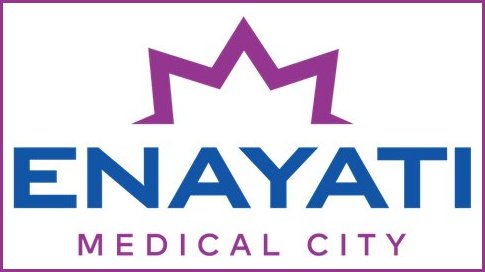 Private medical services market could attract new players, competition will become stronger. Last year was marked by the arrival of Turks from Memorial Healthcare, one of Enayati Medical City’s best-known networks in Turkey, who took their first steps into the local market by taking over the Monza oncology hospital in Enayati Medical City. The Italians from Monca owned 80% of the oncology hospital in Enayati Medical City, while Wargha Enayati, the founder of Enayati Medical City, owned 20% of the oncology hospital.
Private medical services market could attract new players, competition will become stronger. Last year was marked by the arrival of Turks from Memorial Healthcare, one of Enayati Medical City’s best-known networks in Turkey, who took their first steps into the local market by taking over the Monza oncology hospital in Enayati Medical City. The Italians from Monca owned 80% of the oncology hospital in Enayati Medical City, while Wargha Enayati, the founder of Enayati Medical City, owned 20% of the oncology hospital.
New laboratories and collection points are coming up around the country
Investment in laboratories and collection centers has proven profitable under conditions where most patients pay for medical tests, since for tests with a referral ticket, House funds run out in the first few days of the month. The lists of patients waiting to be capped for routine blood tests stretch over one or two months. There are a total of 4,477 laboratories on the local market, most of them in Bucharest. In the past five years (excluding 2020 with the lockdown), nearly 500 new medical laboratories have opened in the public and private systems.
Large pharma chains continue to consolidate
The market will become increasingly competitive, the battle for pharmacies will become fiercer, after Sensiblu acquired Gedeon Richter’s pharmacies and ointment distribution division through Dr. Max Group last year. Practically, this transaction means an increase in the number of pharmacies Sensiblu/Dr. Max to more than 800 units and brings the group closer to the market leader – Catena – with 900 pharmacies nationwide.
The major players in the pharmaceutical market will further strengthen their position by acquiring new pharmacies. A total of 155 pharmacies were bought up by major players in the pharmacy market from the fall of 2021 to the end of last year.
Patients will continue to go directly to the UPU of public hospitals to resolve certain medical problems in the absence of the state polyclinic
Outpatient medicine, not only in the hospital but especially outside the hospitals, in state polyclinics, remains the weak point of the public health system. There are not even state clinics anymore, only 4 state clinics were listed on the statistics, compared to 590 state clinics in 1990. All offices in the outpatient clinics are now private.
Patients will continue to go directly to the hospital for resolution of certain medical problems in the absence of the public outpatient clinic.
Medical Sector Trade Mission to Romania and Hungary from March 19-23.
Market reports show a high demand for Life Science & Health (LSH) solutions and expertise in Romania and Hungary. The EU and the World Bank are funding projects worth billions of euros.
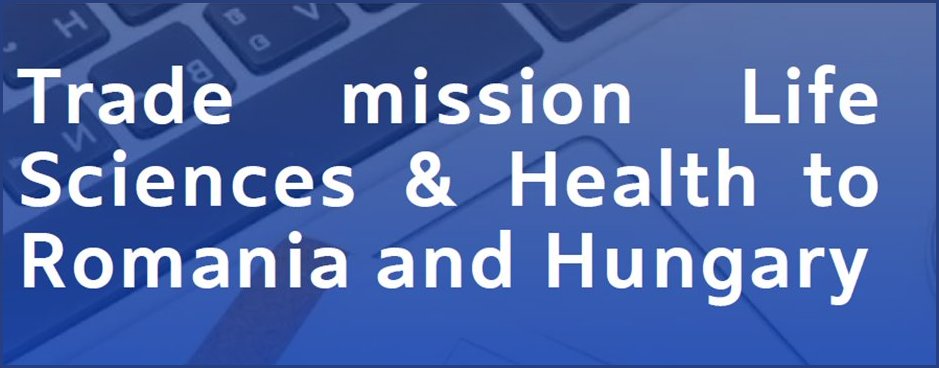 Also growing is large private spending on health care. Do you want to become a subcontractor or supplier for tenders? With knowledge of the local market, it can be a good business strategy.
Also growing is large private spending on health care. Do you want to become a subcontractor or supplier for tenders? With knowledge of the local market, it can be a good business strategy.
Purpose of trade mission
The purpose of this mission is for Dutch companies to connect with potential partners through individual matchmaking. Or that they can participate in pilot projects in the Hungarian and Romanian LSH sectors. Ultimately, this leads to concrete business and contracts for the participating companies
Opportunities for Dutch companies
Dutch business has much to offer in the medical sector in both countries. Specifically, there are opportunities in:
- digital care and other innovative solutions in public and private health care;
- cancer screening (both hardware and software solutions);
- medical infrastructure of hospitals;
- construction of medical centers and hospitals;
- training and education of health professionals;
- (subcontractor in) tenders from the EU, World Bank and other multilateral financing institutions;
- partnerships with Romanian and/or Hungarian companies in the health sector;
- identification of pilot projects, possibly funded by instruments of multilateral funding institutions.
For whom.
Participation in the mission is open to Dutch companies and knowledge institutions active in the following subsectors:
- EHealth and digital health solutions, remote monitoring, prevention and self-care;
- Innovative equipment for hospitals and clinics, diagnostics, inpatient care, ambulatory care and advanced therapies.
Editorial DRN: Although this mission was already known on Nov. 29, 2022, this information reached us indirectly and only the last week of January 2023. The closing date for enrollment is given as Feb. 10, 2023. For further information such as program and registration please contact Handelsroute.nl sandra@handelsroute.nl
Romanian labor market developments
Relative stability of Romanian business activity expected
According to the INS (Romanian Bureau of Statistics) survey, in the January-March period, managers expect relative stability of activity and the number of employees in the manufacturing and service sectors, in parallel with the strong increase in prices in trade.
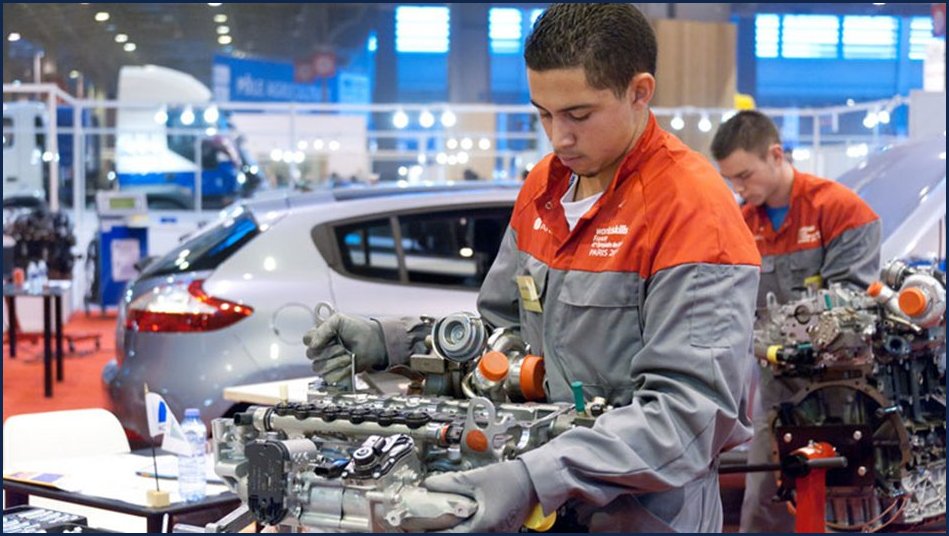 In the manufacturing sector, managers forecast relative stability in the volume of production (short-term balance 0%) and the number of employees over the next three months, while prices of industrial products will rise (short-term balance +32%).
In the manufacturing sector, managers forecast relative stability in the volume of production (short-term balance 0%) and the number of employees over the next three months, while prices of industrial products will rise (short-term balance +32%).
In construction, the volume of production will decrease (short-term balance -9%), in parallel with the moderate decrease in the number of employees (short-term balance -7%). As for the prices of construction works, managers forecast their increase (short-term balance +39%).
In the retail sector, estimates for the next three months show a moderate downward trend in economic activity (short-term balance -12%). The volume of orders addressed to  suppliers of goods per trade unit will also decrease slightly (short-term balance -9%). In addition, employers anticipate a moderate increase in the number of employees (short-term balance +15%) and a sharp increase in prices (short-term balance +46%).
suppliers of goods per trade unit will also decrease slightly (short-term balance -9%). In addition, employers anticipate a moderate increase in the number of employees (short-term balance +15%) and a sharp increase in prices (short-term balance +46%).
According to estimates from January 2023, demand for services (sales) will remain relatively stable over the next three months (short-term balance -3%). Relative stability of headcount is estimated (short-term balance -1%). Managers in the field think sales or billing prices of services will increase (short-term balance +24%).
Economical developments
Romania’s economy will grow faster than its stagnant neighbors
The International Monetary Fund (IMF) expects Romania’s economy to grow by 3.1% this year, helped by European Union financing, currency stability and foreign investment, allowing the economy to surpass stagnant neighbors such as Poland and Hungary.
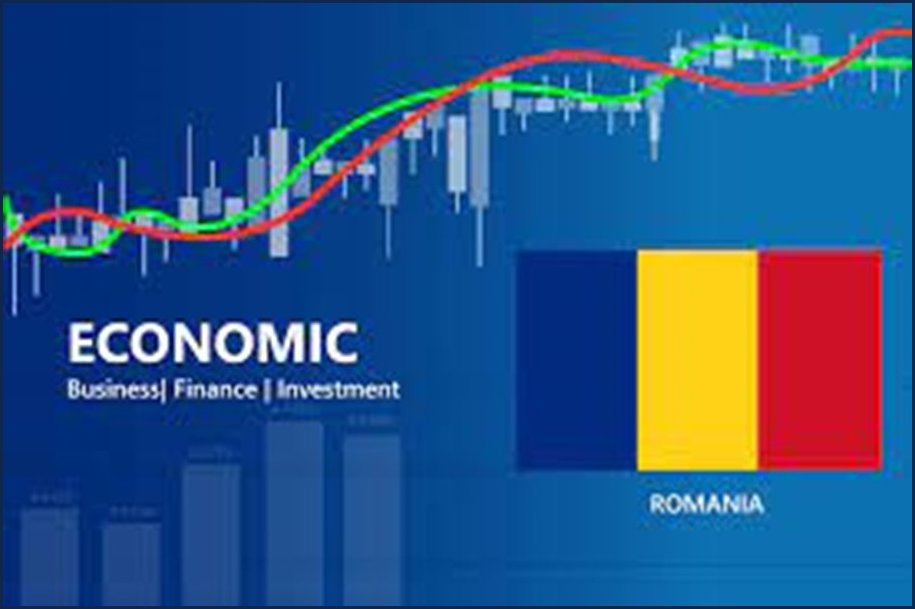 Romania’s growth is based on European Union funding, currency stability and foreign investment, driven in part by reshoring from Russia and Ukraine. According to Reuters, the country has quietly closed in on its competitors to become Eastern Europe’s second-largest economy after Poland.
Romania’s growth is based on European Union funding, currency stability and foreign investment, driven in part by reshoring from Russia and Ukraine. According to Reuters, the country has quietly closed in on its competitors to become Eastern Europe’s second-largest economy after Poland.
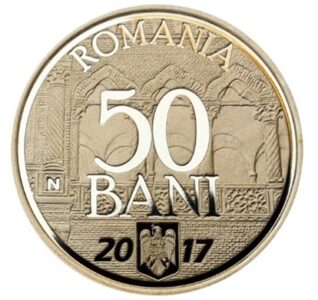 GDP per capita expressed as purchasing power was 74% of the EU average in 2021, up 21% since 2010. In 1990, Romania’s per capita GDP was $5,277.5, while in 2021 it will be $35,869.6, according to the World Bank .
GDP per capita expressed as purchasing power was 74% of the EU average in 2021, up 21% since 2010. In 1990, Romania’s per capita GDP was $5,277.5, while in 2021 it will be $35,869.6, according to the World Bank .
In Romania, prospects are supported by EU membership and good relations with Brussels, Reuters said in its report. Romania has already taken more than €6 billion in grants and low-interest loans from the EU and is aiming for €10 billion a year. About €90 billion of EU funding is available until 2027.
A few months earlier, the European Commission lifted a mechanism overseeing Romania’s judicial system. Meanwhile, neighboring Hungary and Poland are engaged in a battle with the EU for funding.
The stability of the leu (RON) is another factor, especially compared to the Hungarian forint, which reached several record lows last year. Higher salaries across the border have already led some Hungarians to take jobs in industrialized western Romania. The forint lost 8% against the leu last year.
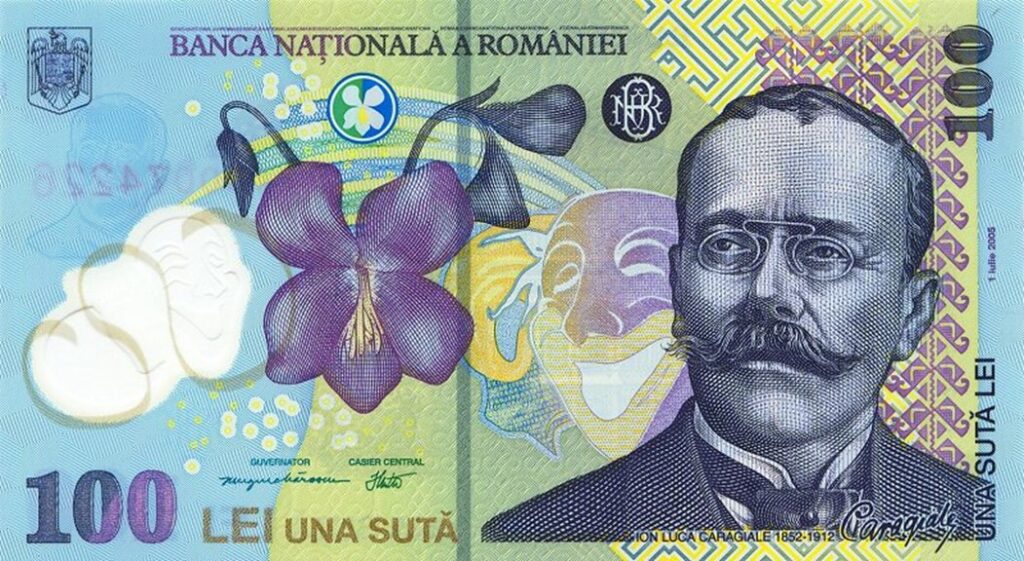
A 2022 Ernst&Young survey found that more than half of the 101 foreign companies planned to set up or expand operations in Romania, mainly in the areas of supply chains and logistics, ranking it fourth in Europe in terms of intention to invest. Reshoring from Russia and Ukraine boosted foreign direct investment in Romania to 9.39 billion euros between January and October, the highest figure in 10 months since Romania joined the EU.
Although economic hurdles and regional differences remain, and while Romania was kept out of the Schengen area in a December vote, the Romanian economy appears to be booming.
Energy sector
Russia has increased oil shipments from the Arctic to China and India
Russia has increased shipments of Arctic oil to China and India, offered at deeper price cuts, after Europe closed its doors to Russian crude last month, according to trade sources and data cited by Reuters.
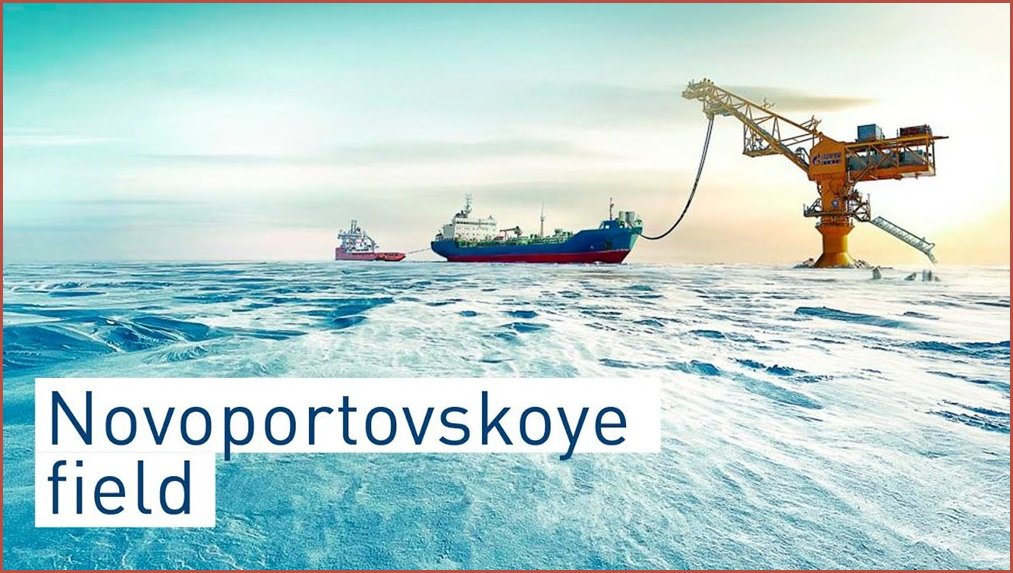 Arco, Arco/Novy Port and Varandey Arctic oil does not normally go east, but is now being diverted after the European Union, the G7 countries and Australia introduced a price cap on Russian oil in December, on top of the EU embargo on Russia’s delivered oil by sea. Sellers are trading Russian crude at bigger price discounts while absorbing higher transportation costs. All this Arctic crude normally goes to the EU, but now it has to go somewhere else,” said a trader in Singapore. Arctic crude oil exports to India have risen steadily since May, with a record 6.67 million barrels loaded in November and 4.1 million barrels in December, Refinitiv data show. Most deliveries involved oil from Arco and Arco/Novy Port, from fields operated by Gazprom Neft. Arco crude oil is a crude oil from the Prirazlomnoie field, while higher-quality Novi Port crude oil comes from the Novoportovskoie field. Last week, India imported the first quantity of Varandey crude oil, which was loaded at Murmansk port in late November, according to two sources and data from Refinitiv.
Arco, Arco/Novy Port and Varandey Arctic oil does not normally go east, but is now being diverted after the European Union, the G7 countries and Australia introduced a price cap on Russian oil in December, on top of the EU embargo on Russia’s delivered oil by sea. Sellers are trading Russian crude at bigger price discounts while absorbing higher transportation costs. All this Arctic crude normally goes to the EU, but now it has to go somewhere else,” said a trader in Singapore. Arctic crude oil exports to India have risen steadily since May, with a record 6.67 million barrels loaded in November and 4.1 million barrels in December, Refinitiv data show. Most deliveries involved oil from Arco and Arco/Novy Port, from fields operated by Gazprom Neft. Arco crude oil is a crude oil from the Prirazlomnoie field, while higher-quality Novi Port crude oil comes from the Novoportovskoie field. Last week, India imported the first quantity of Varandey crude oil, which was loaded at Murmansk port in late November, according to two sources and data from Refinitiv.
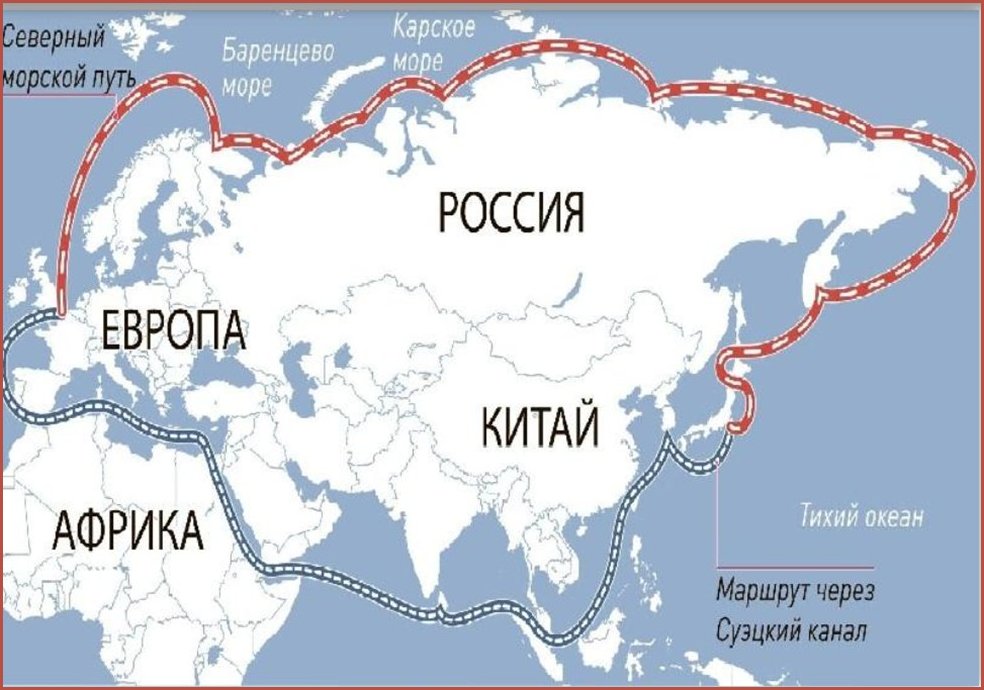
The 900,000-barrel cargo of the tanker Bear Alcor, which sailed through Europe, the Mediterranean and the Suez Canal, was unloaded at Cochin port in Kerala on Dec. 27 for the refinery of Bharat Petroleum Corp. The other two batches of 600,000 barrels, loaded in November, were unloaded in Rotterdam. It was not clear which companies were buying these shipments. Russia has reasonably good volumes of oil and other grades, which are offered to Indian buyers, said one of the sources at an Indian refinery.
In short, volume will not be the biggest negative factor, but rather the lower price and transportation.
Aviation Sector
TAROM, presumably profitable again very soon?
National airline TAROM is expected to make a profit next year, according to the restructuring plan, updated and sent to the European Commission.

The last year the airline made a profit was 2007. Before the information was presented here, it was announced long before. TAROM’s financial results have deteriorated significantly since 2015, with the level of recorded losses increasing dramatically, from a loss of 62.93 million lei (about 13 million euros) in 2015 to nearly 189 million lei (about 39 million euros) in 2018, with a slight decrease for 2019 of 174.27 million lei (about 36 million euros). However, during the pandemic, these losses became more acute, reaching 439.8 million lei in 2020 to drop to 327.6 million lei in 2021, as sales also reached 668.7 million lei in 2021, compared to 355.3 million lei in 2020. Moreover, according to the latest data, TAROM recorded a loss of 208.7 million lei in the first half of 2022 (from a minus of 176.3 million lei in the same period of the previous year), at companies of more than 453 million lei (compared to up to 232 million lei in the first half of 2021).
More importantly, TAROM’s restructuring plan has an estimated cost of up to 1.84 billion lei (about 380.3 million euros), of which the company requested 923.6 million lei (about 190.8 million euros) as individual state aid for restructuring from the government. Tarom instead promised a 33% reduction in the total number of employees, including a 50% reduction in management positions, and the sale of some aircraft, respectively. In July 2021, the European Commission opened an in-depth investigation to assess whether the Romanian authorities’ support measures to the national airline TAROM are in line with EU state aid rules.
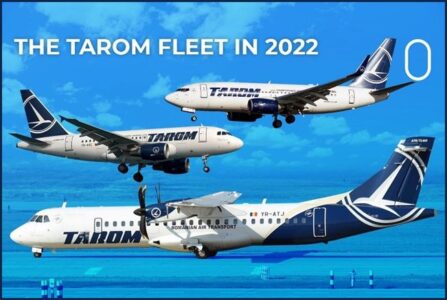 The European Commission is threatening Romania with infringement for changes in the leadership of the Competition Council. History of the dispute According to an official document, on 8.12.2022, the Ministry of Transport and Infrastructure received from the company TAROM the updated restructuring plan according to the discussions with the representatives of the European Commission.” This plan was submitted to the Commission for analysis. In the updated restructuring plan, TAROM promises to return to profit as early as next year, despite huge losses from 2007 to the present. “According to the updated restructuring plan, the base case, the TAROM company will make a profit in 2024, ” the document itself says Transport Minister Sorin Grindeanu, adding that the company’s restructuring period covers the period 2020-2025. As part of the restructuring process, TAROM launched the elimination of more than 110 positions last year, but suspended flight attendant layoffs following the acquisition of specialized personnel from Blue Air . Also, late last year TAROM offered 7 seven ATR aircraft for sale, having previously sold 4 Boeing aircraft.
The European Commission is threatening Romania with infringement for changes in the leadership of the Competition Council. History of the dispute According to an official document, on 8.12.2022, the Ministry of Transport and Infrastructure received from the company TAROM the updated restructuring plan according to the discussions with the representatives of the European Commission.” This plan was submitted to the Commission for analysis. In the updated restructuring plan, TAROM promises to return to profit as early as next year, despite huge losses from 2007 to the present. “According to the updated restructuring plan, the base case, the TAROM company will make a profit in 2024, ” the document itself says Transport Minister Sorin Grindeanu, adding that the company’s restructuring period covers the period 2020-2025. As part of the restructuring process, TAROM launched the elimination of more than 110 positions last year, but suspended flight attendant layoffs following the acquisition of specialized personnel from Blue Air . Also, late last year TAROM offered 7 seven ATR aircraft for sale, having previously sold 4 Boeing aircraft.
Sector Culture
Timisoara European Capital of Culture in 2023
Since 1985, one city has carried this title each year; since 2004, it has been several countries each year that may provide a candidate. Its aim is to highlight the richness, diversity and common characteristics of European cultures and contribute to the citizens of the European Union getting to know each other better. And in the times we live in today, that seems like an extra recommendation to us!

Timisoara
The theme of Light has been spotted as the central idea to transform the city through culture and participation. Therefore, the slogan Shine your Light – Light Up Your City is about their values to spread in Europe for a broad-minded, visionary attitude.
 Sometimes radical change begins on a street corner. In 1884, Timisoara was the first city in continental Europe with electric street lighting. In 1989, the sparks of the revolution against the Ceausescu regime ignited in the streets of Timisoara.
Sometimes radical change begins on a street corner. In 1884, Timisoara was the first city in continental Europe with electric street lighting. In 1989, the sparks of the revolution against the Ceausescu regime ignited in the streets of Timisoara.
Throughout its existence, Timisoara has been a city of sparks that have stimulated transcontinental transformations. It was the soul and promoter of the region, the bridge between the Austro-Hungarian Empire and Southeastern Europe. In difficult times, citizens united and inspired others to do the same.Through its diaspora, spread across the continent, Timisoara communicated with other Europeans experiencing similar challenges from different perspectives. Our ambition is to exploit and develop this potential within the European Capital of Culture 2023The numerous activities that take place throughout the year such as numerous concerts or the special exhibition of the world-famous sculptor Constantin Brancusi make it worth a visit, even if you have to make a detour. Good hotels and restaurants plenty and the many terraces give the center an inviting appearance.
In difficult times, citizens united and inspired others to do the same.Through its diaspora, spread across the continent, Timisoara communicated with other Europeans experiencing similar challenges from different perspectives. Our ambition is to exploit and develop this potential within the European Capital of Culture 2023The numerous activities that take place throughout the year such as numerous concerts or the special exhibition of the world-famous sculptor Constantin Brancusi make it worth a visit, even if you have to make a detour. Good hotels and restaurants plenty and the many terraces give the center an inviting appearance.
Opera Gala – The Romanian Dutch Cultural Connection

Geopolitical interfaces between Schengen and Ukraine
Germany urges EU to decide by qualified majority, not unanimity
German Foreign Minister Annalena Baerbock(pictured) said Wednesday that the European Union can no longer allow its decisions to be blocked by a single member state, Reuters reported.
“Qualified majority voting can lead to fairer results for all of us,” Baerbock told a conference in the Portuguese capital, Lisbon.
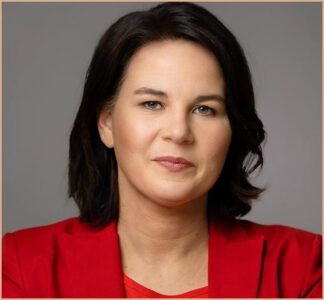 “We need to be able to act efficiently and quickly,” she insisted.Baerbock said EU countries often cannot even draft a press release “because they cannot agree on the same wording.”
“We need to be able to act efficiently and quickly,” she insisted.Baerbock said EU countries often cannot even draft a press release “because they cannot agree on the same wording.”
The idea that European decisions should no longer be taken unanimously but by qualified majority has been brought back into the discussion by some member states, both in the context of the blockade of Romania and Bulgaria in Schengen, and in the negotiations about it sometimes resemble blackmail by some EU countries with Brussels (most recently Poland and Hungary), threatening to block some decisions if certain concessions are not made.
What Baerbock said about Ukraine
Speaking about Russia’s war, she said Germany was looking for new ways to help Ukraine protect its people and infrastructure.
“And this year we must protect and develop the European unity that made us strong last year,” Baerbock said at a press conference with his Portuguese counterpart in Lisbon.
Annalena Baerbock said the European Union has tried everything to stop the war in Ukraine, but that Russian President Vladimir Putin has no intention of doing anything but destroying the neighboring country.
Putin’s position is why it is “important to continue supplying weapons so that Ukraine can defend itself and protect people’s lives,” she added.
Putin praises good relations with Austrians and other ‘ordinary people’ in West
Russian President Vladimir Putin claims Russia has good relations with “ordinary people” in the West, citing the Austrians as an example, reports Lenta, one of Russia’s most popular news sites.
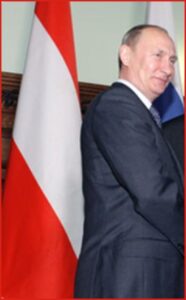 Putin made the remarks Wednesday during a visit to the Lomonosov technology development cluster at Vorobyovy Gory State University in Moscow, during which the Russian president said the opinion of ordinary people in the West does not change because of the political situation, with many of them able to maintain good relations. The Kremlin leader pointed to contacts with the Austrians in this regard. “I know they treat our country very kindly, and despite all the dramatic events taking place in the world, their views on our country do not change, unlike the political elites in some countries, including in Europe,” he stressed. He also recalled that the Soviet Union guaranteed the Austrian constitution, stating that many citizens of the country still thank Russia for it. Austria is one of two countries in Central and Western Europe that is not a NATO member, the other being Switzerland. Putin reiterated during his visit that the purpose of the “special military operation” he launched on Feb. 24 last year is to “protect the people and Russia itself.” Putin also said during his visit to Moscow University that Russia cannot allow threats to be made on “its own historical territories,” a reference to the Ukrainian territories it annexed in September 2022.
Putin made the remarks Wednesday during a visit to the Lomonosov technology development cluster at Vorobyovy Gory State University in Moscow, during which the Russian president said the opinion of ordinary people in the West does not change because of the political situation, with many of them able to maintain good relations. The Kremlin leader pointed to contacts with the Austrians in this regard. “I know they treat our country very kindly, and despite all the dramatic events taking place in the world, their views on our country do not change, unlike the political elites in some countries, including in Europe,” he stressed. He also recalled that the Soviet Union guaranteed the Austrian constitution, stating that many citizens of the country still thank Russia for it. Austria is one of two countries in Central and Western Europe that is not a NATO member, the other being Switzerland. Putin reiterated during his visit that the purpose of the “special military operation” he launched on Feb. 24 last year is to “protect the people and Russia itself.” Putin also said during his visit to Moscow University that Russia cannot allow threats to be made on “its own historical territories,” a reference to the Ukrainian territories it annexed in September 2022.
DRN Addition: Through Austrian Foreign Minister Alexander Schallenberg, European sanctions against Russia on Russian gas supplies are ruling out. He also does not want the new Nord Stream 2 gas pipeline to fall under the scope of sanctions. That the Austrian oil and gas company OMV is co-investing in Nord Stream 2 may play into Schallenberg’s reluctance to source gas in new European sanctions. Also, a major hub for the distribution of Russian gas to Europe is located near Vienna.
Die Presse: Why are illegal border crossings decreasing in Austria? From mid-December, the numbers dropped sharply
Austria recorded more than 100,000 illegal border crossings last year, justifying its rejection of Bulgaria and Romania’s accession to Schengen, criticizing the inadequate protection of the EU’s external border. However they “forgot” to mention Greece where most of the refugee fortune seekers were located. The result was a diplomatic dispute between Sofia and Bucharest on the one hand and Vienna on the other.
But meanwhile, the numbers dropped sharply: from mid-December to the first days of January, 70% fewer illegal immigrants were detained, reports the daily “Die Presse.”
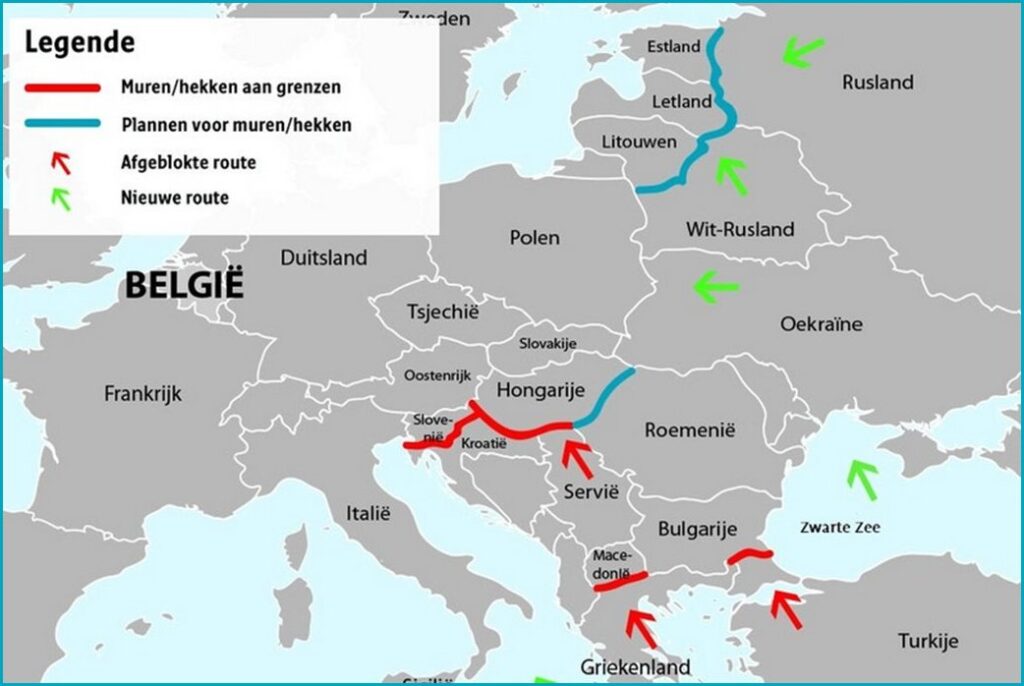
Meanwhile, the flow of refugees on the Western Balkan route is decreasing. The government in Vienna attributes this development to the fact that Serbia reintroduced visas for Indian and Tunisian citizens. From this country, migrants reached the EU with the help of guides, in exchange for a few thousand euros. Austria alone received 30,000 asylum applications from India and Tunisia last year. In asylum statistics, these countries rank third and fourth, after Afghanistan and Syria. Moreover, many of them used the Serbian airport and were registered.
But the sudden drop in the number of illegal migrants is probably most is due to the fact that many of those who had been staying for months or even years in refugee camps in the Western Balkans (especially Greece) left before the start of the cold season to find a “safer” place, with more comfortable accommodation in winter – in Austria, Germany, Sweden or other EU countries, notes “Die Presse.” For their part, at least, authorities in Greece are gradually trying to clear the overcrowded camps and allow the migrants to move north. After travel restrictions due to the pandemic ended and this opportunity occurred last year.
Furthermore, the Austrian government fails to mention that Germany tightened border controls with Austria in 2022 and they barely anticipated this.
DRN Summary: Comprehensive evidence shows that Austria has had little or no migration policy for two years and blames the negative consequences on other countries, including Bulgaria. All the quasi arguments that people used in the process have been refuted.
The Council of the European Union adopted a decision last year calling on Austria to apply the Schengen law and remedy the shortcomings identified by the European Commission in its 2020 assessment report on compliance with migrant return rules, which showed that Vienna authorities have major problems with border management. The report highlights that Austria has an old domestic problem that it has not solved in the past two years, while – as mentioned above – trying to blame other states.
Asylum and migration policy must be addressed at the European level, and for the so-called Balkan route, the focus is on Greece. Mark Rutte indicating we should go back to Dublin rules won’t solve the Greek problem
The accession of Romania and Bulgaria can therefore be arranged in the short term.
EU rotating president Sweden has rightly indicated that a vote on Schengen will not be initiated until Romania and Bulgaria reach an agreement with Austria and the Netherlands
President Zelenskyy dismisses Ukraine’s ambassador to the Netherlands
Ukrainian President Volodymyr Zelensky dismissed the country’s ambassador to the Netherlands, Maksym Kononenko. Zelenskyy announced the decision on his office’s website. No reason was given for Kononenko’s  resignation. Kononenko has only been in the role for a little more than seven months. In addition to being fired as his country’s ambassador, Kononenko was also fired as Ukraine’s representative to the Organization for the Prohibition of Chemical Weapons. The OPCW is based in The Hague.
resignation. Kononenko has only been in the role for a little more than seven months. In addition to being fired as his country’s ambassador, Kononenko was also fired as Ukraine’s representative to the Organization for the Prohibition of Chemical Weapons. The OPCW is based in The Hague.
Maxim Kononenko (born Kropyvnytsky, 1980) studied international law and French in Moscow, Kiev and Paris. From 2004, he held various positions at the Ministry of Foreign Affairs, including at the Council of Europe in Strasbourg and the Ukrainian Embassy in Paris. On Feb. 16, 2022, eight days before the Russian invasion, Kononenko took office as ambassador to the Netherlands.
NATO moves spy planes from Germany to Romania to track Russians in Ukraine
Wanting to “monitor Russian military activities” while supporting the Alliance’s “enhanced presence in the region,” NATO is moving AWACS surveillance aircraft and they arrived in Bucharest on Tuesday, Jan. 17, NATO sent a press release quoted by DPA.
 The planes will be stationed some 200 kilometers from the border with Ukraine, where 180 military personnel will also be sent.
The planes will be stationed some 200 kilometers from the border with Ukraine, where 180 military personnel will also be sent.
“As Russia’s illegal war in Ukraine continues to threaten peace and security in Europe, there should be no doubt about NATO’s determination to protect and defend every inch of allied territory,” said NATO spokeswoman, Oana Lungescu.
“Our AWACS aircraft can detect aircraft at a distance of hundreds (400) of kilometers, which is an important tool of NATO’s deterrence and defense posture. I thank Romania for hosting the aircraft, which will make an important contribution to our early warning capability,” she added.
Train traffic with Ukraine resumed via the Valea Vişeului – Dilove border crossing
Bogdan Lari Mihei, the president of AVR, participated in the inauguration of the resumption of train traffic with Ukraine through the Valea Vişeului – Dilove border crossing.
“On Jan. 17, 2023, the first
Ukrainian train into Romania with a delegation consisting of representatives of Ukrainian authorities. Along with Mr. President Bogdan Lari Mihei, the meeting was attended by representatives of the Prime Minister’s Office, the Ministry of Transport, SNTFC CFR Călători SA, the local authorities of Maramureş District and the Romanian Consul in Solotvino – Ukraine,” the press release said.
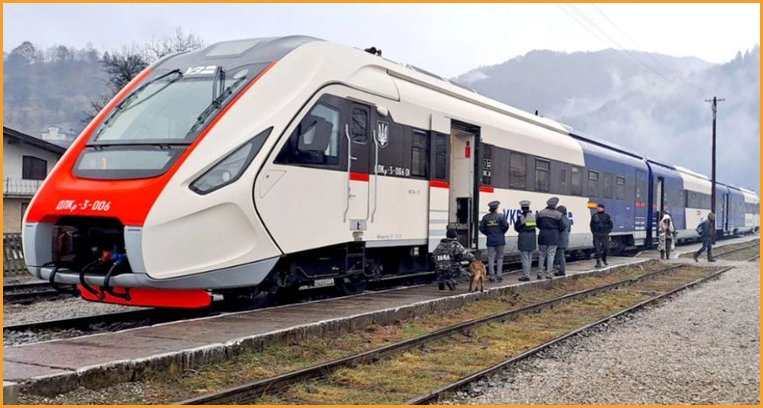
According to the quoted source, the purpose of this meeting was the reopening of train traffic between the two countries, and the Ukrainian authorities informed that from Jan. 18, 2023, two round trips per train will pass through this point daily,in any Ukrainian train with 182 seats available. “On the occasion of the bilateral talks, Mr. President Bogdan Lari Mihei assured the participants that Customs is making every effort to open new border crossings and find solutions to facilitate the transit of goods and passengers through them and stressed the good cooperation between the two parts,” the press release reads.
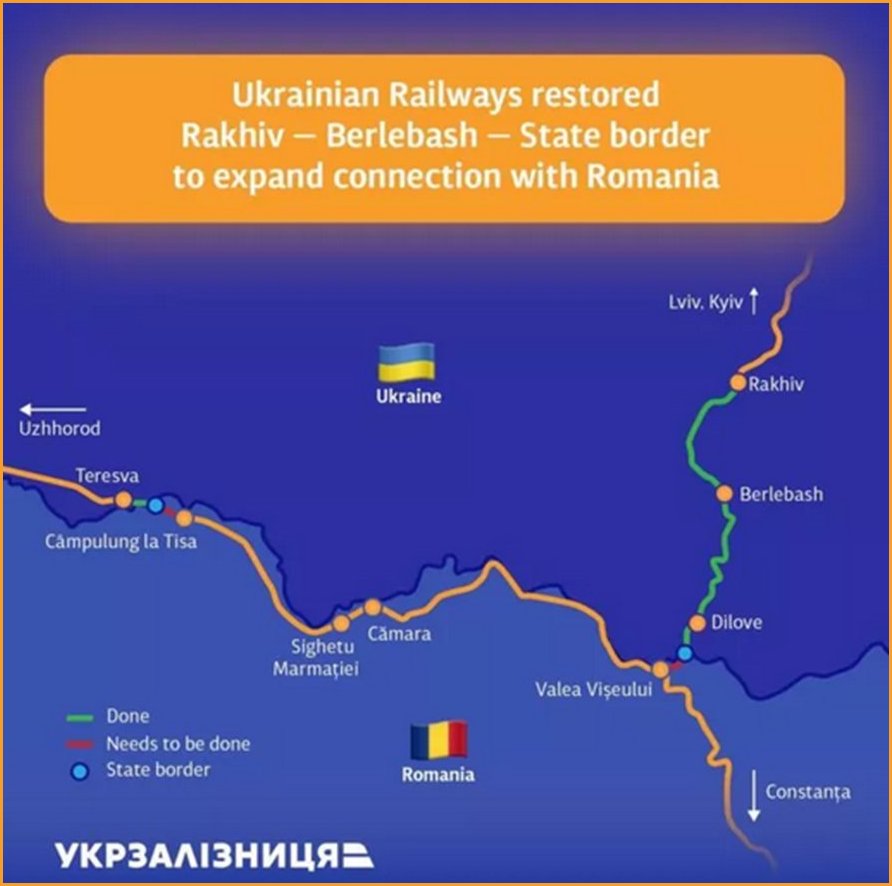 The first train connecting Ukraine with Romania was launched on Jan. 18 after a 17-year break, reported the CEO of Ukrainian state rail service Ukrzaliznytsia Oleksandr Kamyshin. Train #810 connects Rakhiv and Dilove in Ukraine with Valea Viseului in Romania and runs twice daily. According to Mr. Kamyshin, repairs of the 20 km of track through Ukraine were completed during the Russian war against Ukraine in August 2022, after two months of work, and Romanian railroads completed the remaining length in six months. Ukraine also bought brand new diesel trains for the route, made in Ukraine during the war. The connection is important, says Mr. Kamyshin, because: It is yet another connection for cargo exports, which means more business for both countries. It is vital to Ukraine, as cargo exports are oxygen to Ukraine’s economy amid Russian occupation and obstruction of Black Sea ports. It is also beneficial to Romania, both the railroads and the seaport of Constanta, as well as a great expansion for #SolidarityLanes, which finds overland transportation options for the export of Ukrainian grain. It is another connection for Ukrainians to the EU. “You can change trains in Valea Viseului and travel to Cluj-Napoca, where the international airport gives you 30 destinations a day, including 2 flights to London. Or you can go to Bucharest.” More than 30,000 Ukrainians live in Romania’s Maramures province, which borders Ukraine. “We like to give them a comfortable connection to visit their friends and family in Ukraine.” It is a great opportunity for Romanians to visit Ukraine. Ski resorts in winter or hiking in the Carpathians in summer. “And yes, I’m sure many Romanians can travel to Ukraine even in the middle of the war.” After a few more exercises with border control and the customs office, a direct transit route connecting Ukraine to Ukraine via Romania will be launched, which is important because of the Carpathian Mountains, making other ways to connect within Ukraine difficult.
The first train connecting Ukraine with Romania was launched on Jan. 18 after a 17-year break, reported the CEO of Ukrainian state rail service Ukrzaliznytsia Oleksandr Kamyshin. Train #810 connects Rakhiv and Dilove in Ukraine with Valea Viseului in Romania and runs twice daily. According to Mr. Kamyshin, repairs of the 20 km of track through Ukraine were completed during the Russian war against Ukraine in August 2022, after two months of work, and Romanian railroads completed the remaining length in six months. Ukraine also bought brand new diesel trains for the route, made in Ukraine during the war. The connection is important, says Mr. Kamyshin, because: It is yet another connection for cargo exports, which means more business for both countries. It is vital to Ukraine, as cargo exports are oxygen to Ukraine’s economy amid Russian occupation and obstruction of Black Sea ports. It is also beneficial to Romania, both the railroads and the seaport of Constanta, as well as a great expansion for #SolidarityLanes, which finds overland transportation options for the export of Ukrainian grain. It is another connection for Ukrainians to the EU. “You can change trains in Valea Viseului and travel to Cluj-Napoca, where the international airport gives you 30 destinations a day, including 2 flights to London. Or you can go to Bucharest.” More than 30,000 Ukrainians live in Romania’s Maramures province, which borders Ukraine. “We like to give them a comfortable connection to visit their friends and family in Ukraine.” It is a great opportunity for Romanians to visit Ukraine. Ski resorts in winter or hiking in the Carpathians in summer. “And yes, I’m sure many Romanians can travel to Ukraine even in the middle of the war.” After a few more exercises with border control and the customs office, a direct transit route connecting Ukraine to Ukraine via Romania will be launched, which is important because of the Carpathian Mountains, making other ways to connect within Ukraine difficult.
Disclaimer

The newsletter of the Dutch Romanian Network is compiled with great care. The Dutch Romanian Network cannot accept any liability for a possible inaccuracy and/or incompleteness of the information provided herein, nor can any rights be derived from the content of the newsletter. The articles do not necessarily reflect the opinion of the board.
